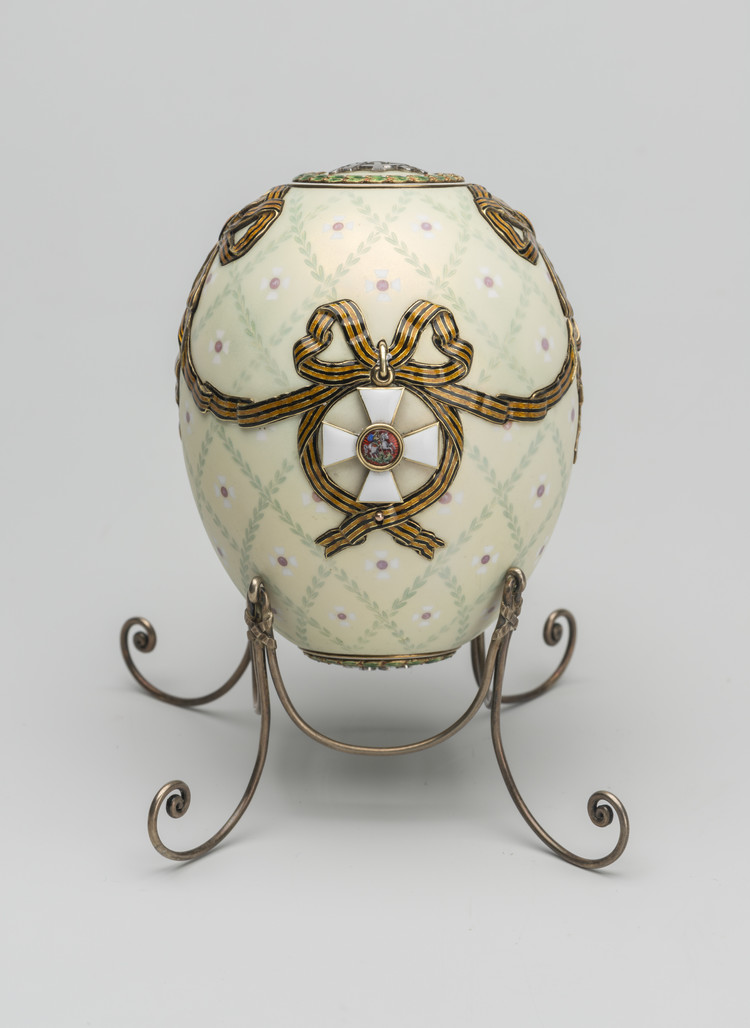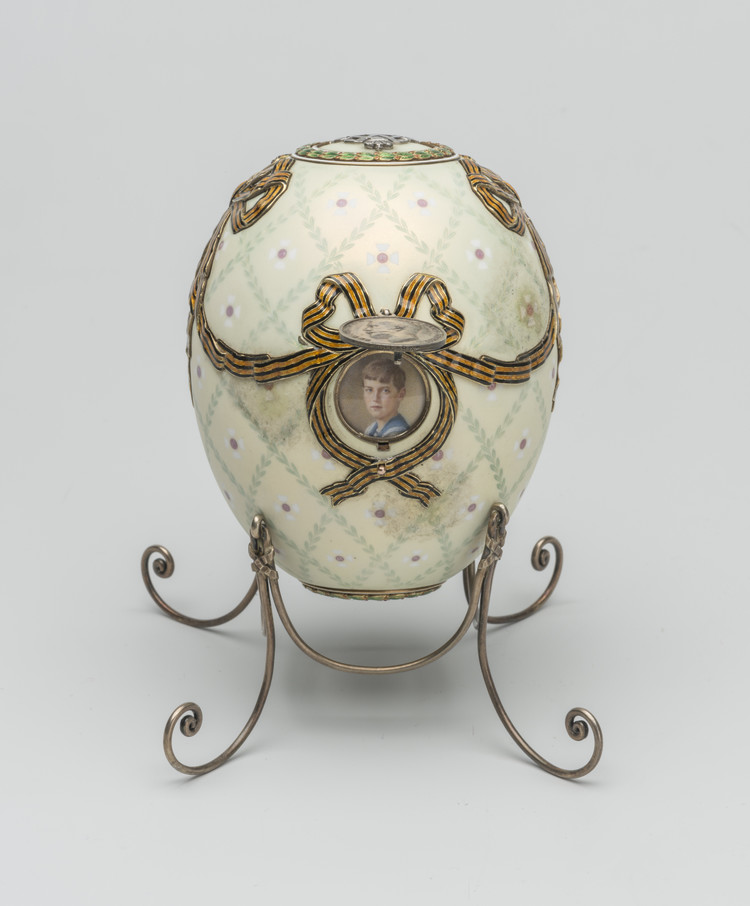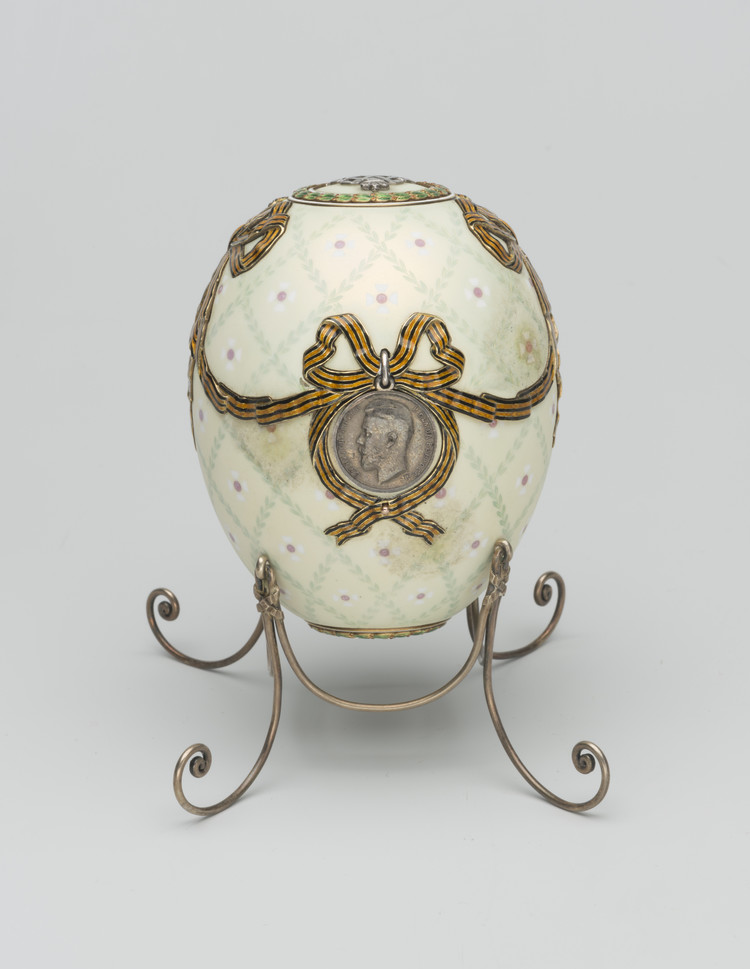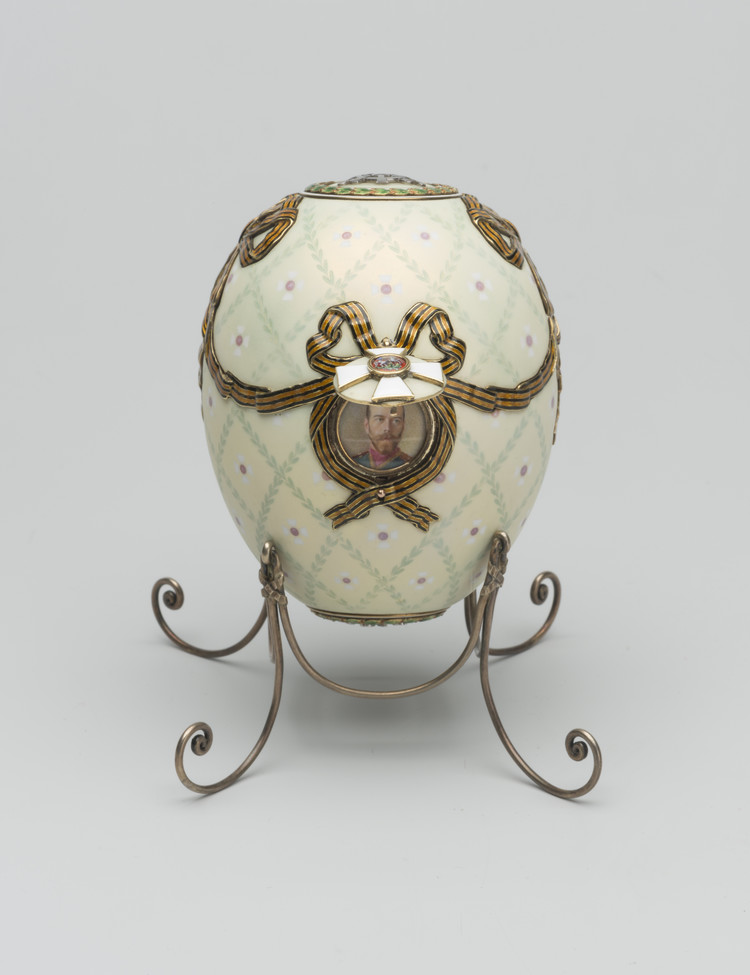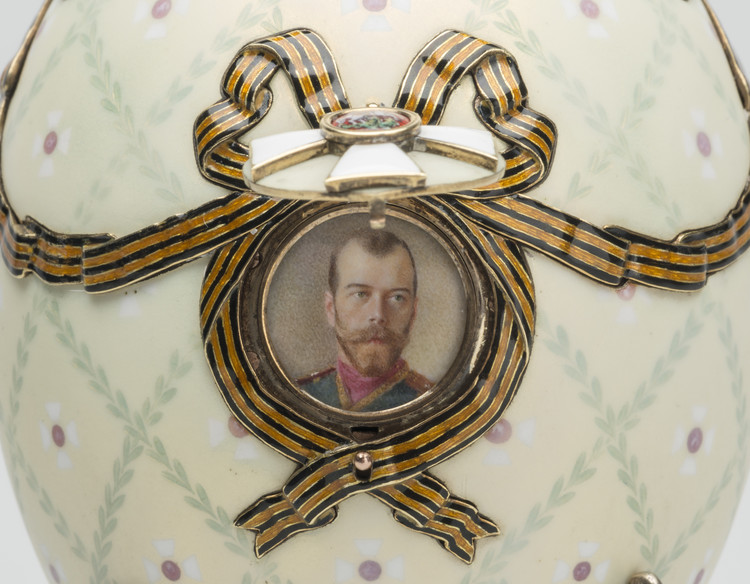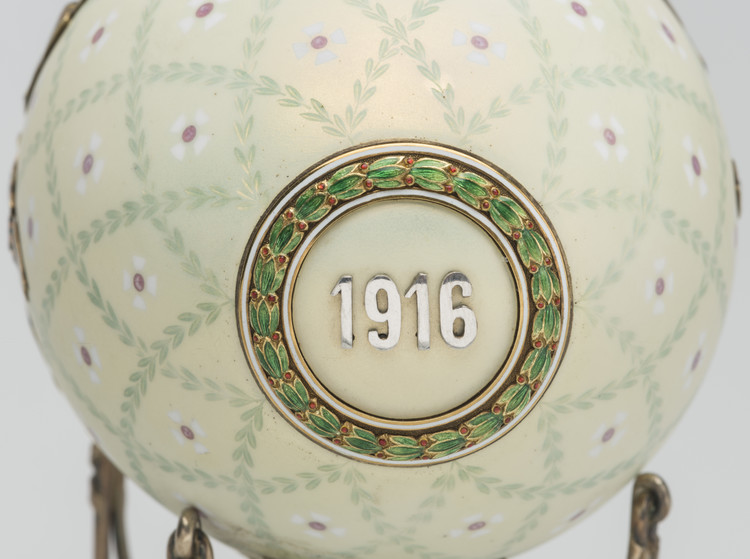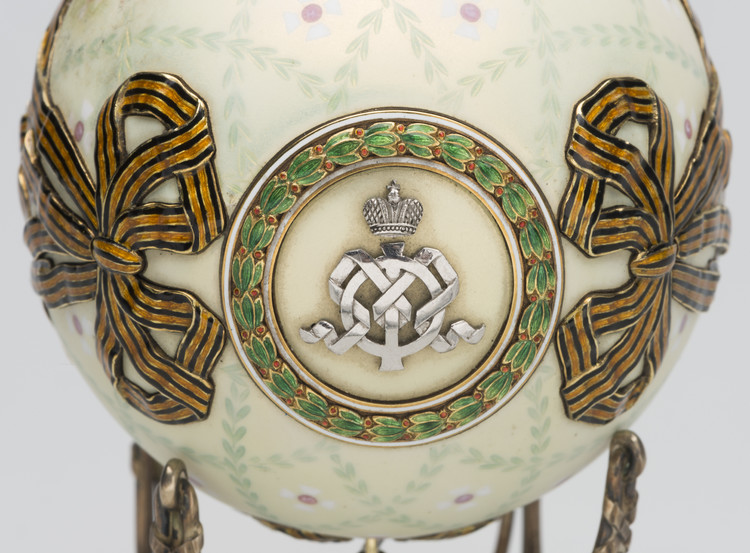The last egg given to Maria Feodorovna by Nicholas II in 1916, during World War I, was decorated by watercolor portraits of the emperor and his son, the tsesarevich Alexei. They are covered by hinged tops with the insignias of the Order of St. George and a silver medal — the awards of the emperor and the heir. They are joined by the St. George black-and-orange ribbons in enamel in the colors of “gunpowder and flames,” which stand out clearly against the gentle background of opaque enamel, “scattered” with St. George crosses, seemingly drowning in haze. On top and bottom of the egg are the monogram of Maria Feodorovna and the date, shimmering with a cold, steely shine.
Unlike the Easter presents during the peace years, the Order of St. George egg is completely devoid of precious stones, complex mechanisms, and fanciful surprises. Some experts feel that it is more than modest because the Fabergé firm was having difficulty with delivery of precious stones and metals. It is hard to agree. According to Franz Birbaum, the Fabergé stores in wartime were selling fabulously expensive jewelry with many large and rare stones, for which there was a great demand. The issuance of currency and the inflation it caused made wealthy people, especially manufacturers who grew rich on military orders, invest in gold jewelry with diamonds.
As Carl Fabergé noted, the number of commissions for luxurious gifts “even increased” during the war, despite the fact that many of his masters were performing military service or working at the state factories. The firm worked for defense, producing insignia and awards for officers, soldiers, and their family members, copper articles with military symbols, and also syringes for the army and sleeves for rapid-fire artillery. It produced its regular assortment of goods as well. The main problem for Fabergé was the draft, because despite his appeals to the military authorities, his best masters who worked on the highest commissions were taken into the army. Empress Maria Feodorovna complained in a letter that her gift to her son “is not very beautiful, but Fabergé had nothing more appropriate since all his masters have gone off to war.”
Both 1916 eggs are made with a markedly modest look also because the jeweler knew the character and lifestyle of his august clients. They did not permit themselves excesses and luxury, including in gifts, in the difficult days for Russia. The egg for the emperor’s wife, Alexandra Feodorovna, was made of artillery steel and set on four shells. The twenty-million pounds sterling that the Imperial family kept in a London bank they spent during World War I to maintain hospitals and charitable institutions under the personal patronage of Nicholas and Alexandra. The empress and her two older daughters, nineteen-year-old Olga and seventeen-year-old Tatiana, worked as nurses. The dowager empress Maria Feodorovna moved to Kiev, the major hospital center of the southwest front. As head of the Russian Red Cross, she spent time in constant meetings with its representatives, Russian and foreign, and in daily visits to the wounded. She participated in the creation of hospitals in various cities and hospital trains. Nicholas II, replacing the Supreme Commander Grand Duke Nikolai Nikolaevich, became head of the army and shouldered “a new responsibility.” He lived almost constantly in the staff headquarters in Mogilev and brought his son and heir with him, because he wanted the troops to see him. “For Alexei this was an enormous event in his life. It was the first time he was away from his mother and sisters for a long time and traveling with his father on real men’s work—war.” After his travels along the front, Nicholas II was awarded the Order of St. George 4th class. The tsesarevich was also recognized for being “in the area of distant fire of enemy artillery” and received a silver medal 4th class on a St. George ribbon.
Upon getting the egg, the dowager empress wrote to Nicholas II: “I kiss you thrice and thank you with all my heart for your sweet cards and charming egg with miniatures, kind Fabergé brought it himself. It’s amazing beautiful. It’s very sad not being together.” The two 1916 eggs complete the set of Imperial Easter masterpieces given to the royals.
The firm was planning to make two eggs for Easter 1917; according to Birbaum, they were not completed. The new regime destroyed the Imperial family — Fabergé’s main clients—and the celebrated jewelry firm, whose owner fled the homeland in 1918 in the guise of a courier of the English embassy. Two years later, Carl Fabergé died in Switzerland. The famous Russian master is buried in Cannes.
